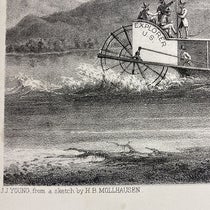Scientist of the Day - The Farnese Atlas

The Farnese Atlas, sculpted in marble ca 150 C.E., Museo Archeologico Nazionale, Naples (Wikimedia commons)
The Farnese Atlas is a marble Roman statue sculpted around 150 C.E. and now in the Archaeological Museum in Naples. Its name comes from the fact that it was acquired by Cardinal Alessandro Farnese in 1562 and placed on display at the Villa Farnese northwest of Rome.
The Farnese Atlas is distinguished by the fact that Atlas is bent by the weight of a marble celestial globe, with depictions of some 40 of the classical 48 constellations carved in relief on its surface. This is the oldest surviving celestial globe in existence. It is probably a copy of an even older globe (and Atlas) dating to Hellenistic times, perhaps 150 B.C.E. The Farnese globe is 26 inches in diameter.
One is tempted to call this a star globe, but in fact it has no stars, just constellations. Some historians of astronomy have tried to date the globe more precisely on the basis of the position of the constellations on the celestial sphere, but without actual star positions, this has proved difficult to do to everyone's satisfaction.
Some of the constellations, like Ursa major and minor, have been lost due to damage, and some were never shown, covered up by the hands and neck of Atlas. We have a large fold-out engraving of the globe in our library, in a copy of the Astronomicon, by the ancient author Manilius (edited by Richard Bentley and published in 1739), which gives you a better view of the constellation details (fourth image), especially when we enlarge a section so you can see Aries, Taurus and Gemini in place on the triple-ribs of the Zodiac (fifth image).
There is another 18th-century engraving of the surface of the Farnese globe that we do not have, but you can see in on the Star Tales website of Ian Redpath, at this link. The same webpage also has an excellent close-up photograph of the globe in place on Atlas’s neck, which is hard to find. We reproduce it here (third image).
The Galileo Museum in Florence has what they call a "cast" of the Farnese star globe, made around 1930 (sixth image). Whatever it is, it is an attractive object.
The Farnese collection also included a large marble statue of Hercules, known as the Farnese Hercules (seventh image). It is one of the great sculptures of all antiquity, and it is a copy of a bronze Greek original, which must really have been something. We mention it because one part of the Hercules mythology has him being tricked by Atlas into temporarily shouldering Atlas’s celestial burden, which Atlas then refused to take back. But since the Farnese Hercules bears only his club, while the Farnese Atlas still has the globe, clearly the scam has not yet been perpetrated. Maybe that is why they kept the Atlas at the villa, and the Hercules at the palace in Rome
William B. Ashworth, Jr., Consultant for the History of Science, Linda Hall Library and Associate Professor emeritus, Department of History, University of Missouri-Kansas City. Comments or corrections are welcome; please direct to ashworthw@umkc.edu.












